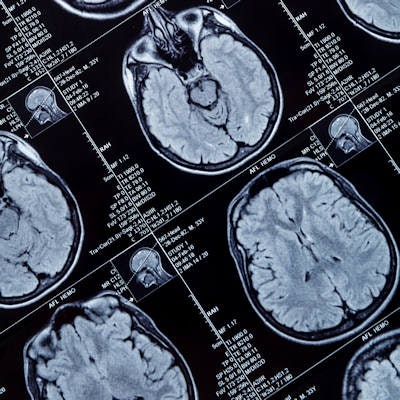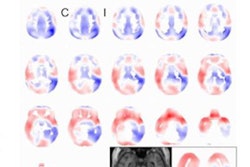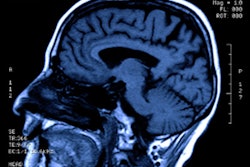
Using MRI to guide stereotactic laser corpus callosotomy (SLCC) for epilepsy treatment is more effective than using a surgical robot for the procedure, according to a study published January 22 in the Journal of Neurosurgery.
The findings suggest that there's a way to further improve SLCC as an alternative to open brain surgery for epilepsy, wrote a team led by Dr. Christopher Rich of Emory University School of Medicine in Atlanta.
"SLCC provides seizure outcomes comparable to open surgery outcomes reported in the literature," the group wrote. "Direct MRI guidance is more accurate, which has the potential to reduce the risks of SLCC."
Less-invasive treatment
Callosotomy is a procedure that cuts corpus callosum fibers in the brain in an effort to block nerves from sending seizure signals between the brain's two halves. The goal is to reduce the frequency and severity of astatic seizures -- which include tonic, atonic, and "drop attack" varieties.
Traditionally, open corpus callosotomy to treat epilepsy has been performed through frontal craniotomy. But this exposes patients to complications such as intracranial hemorrhage, venous infarcts, bone flap osteomyelitis, and hydrocephalus and can result in lengthy hospital stays and recovery times, Rich and colleagues noted.
"Open posterior completion callosotomy can yield additional seizure benefit but carries added risks of vascular injuries and neurological deficits," the team wrote.
An alternative to open surgery is stereotactic laser corpus callosotomy based on MRI-guided laser interstitial thermal therapy (MRg-LITT). Some research has been published regarding the use of MRg-LITT for partial callosotomy to treat astatic seizures, but larger case series reports are few, according to the researchers.
"Stereotactic MRI-guided laser interstitial thermal therapy is an emerging minimally invasive alternative to open epilepsy surgery, especially for focal and deep lesions," the team wrote. "MRg-LITT procedures can be performed by various stereotactic techniques, but direct comparison of approaches is lacking."
To address this lack of research, Rich's group sought to identify seizure outcomes in 13 adult epileptic patients who underwent 15 anterior, posterior, or complete stereotactic laser corpus callosotomies and to compare direct MRI guidance with a stereotactic surgical robot that places stereotactic bolts to support electrode placement. The median patient age at surgery was 29, with a median duration of epilepsy of 21 years and a median postsurgery follow-up of 20 months.
Ten patients underwent anterior stereotactic laser corpus callosotomy. Of these, six experienced more than 50% seizure reduction and four experienced complete seizure resolution. Four patients underwent posterior stereotactic laser corpus callosotomy following a prior anterior procedure, and one patient underwent complete stereotactic laser corpus callosotomy as a single procedure. Of these five patients, three experienced more than 50% seizure reduction and one experienced complete resolution, according to the group.
"We observed incremental seizure benefits from anterior and posterior SLCC procedures in the majority of patients, and 80% of patients with primarily astatic seizures treated by anterior and/or posterior SLCC experienced meaningful benefit or resolution," the authors wrote.
Stereotactic laser corpus callosotomy procedures using direct MRI guidance showed better median radial accuracy compared with the surgical robot (1.1 mm versus 2.4 mm, p = 0.0011).
Seven of 15 patients did experience adverse events following SLCC. However, the majority of these were neurological conditions, such as mild right muscle weakness, slurred speech, and incontinence, although there was one incidence of intraparenchymal hemorrhage in a patient who underwent the robotic technique, the researchers noted.
Avoiding inaccuracies
Direct MRI guidance for SLCC offers a number of advantages, according to Rich and colleagues.
"[It] allows real-time recognition and mitigation of potential inaccuracy at any point before, during, and after placing a device into the brain ... [and] mitigates inaccuracies from nonorthogonal drilling, because the laser device is guided and secured by a platform overlying a craniostomy and the trajectory does not directly depend upon the accuracy of the craniostomy or bolt direction," the team wrote.
Using MRI to guide stereotactic laser corpus callosotomy (SLCC) offers patients a less invasive way to be treated for epilepsy, the researchers concluded.
"Direct MRI guidance is more accurate, which has the potential to reduce the risks of SLCC," they wrote. "Methodological advancements and larger studies are needed."




.fFmgij6Hin.png?auto=compress%2Cformat&fit=crop&h=100&q=70&w=100)




.fFmgij6Hin.png?auto=compress%2Cformat&fit=crop&h=167&q=70&w=250)











